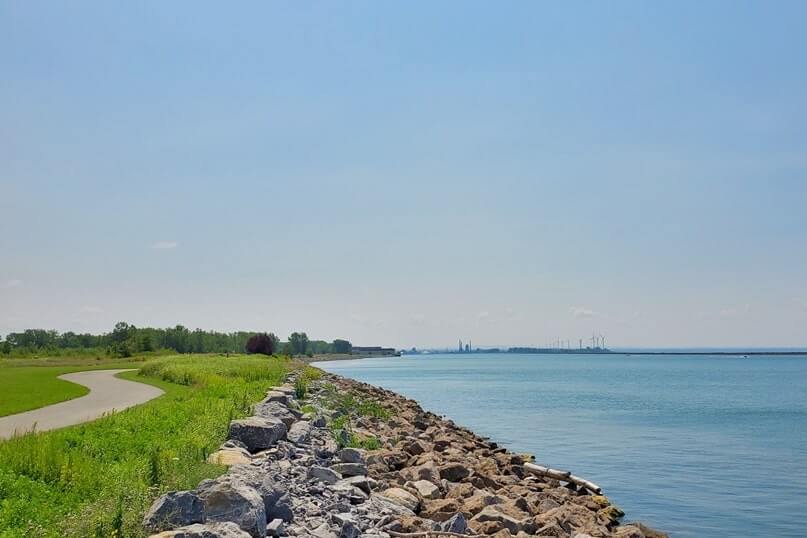Sustainability
The Niagara Frontier Transportation Authority is committed to providing safe and affordable public transportation to, from, and around Western New York. Sustainability is a crucial part of the mission, key to both the economics of our services and the ongoing safety of region. NFTA staff looks for new ways to improve our environmental impact every day. Here are some of our successes.
Take transit when you’re celebrating Earth Day. WNY Earth Day Events Map
View our Earth day Videos. 2023 Video 2022 Video

Wetlands Treatment System
The Buffalo Niagara International Airport is the first airport in the country to use natural methods to treat the chemicals left behind by airplane de-icing. Glycol-based chemicals are vital to the safety of airline passengers and crew, but taxing to the local water system. The subsurface engineered wetlands allow the Buffalo Airport to treat run-off not with unsightly machines, but with a field of grass.

Greenway Nature Trail
The Greenway Nature Trail, on the edge of Buffalo’s outer harbor, is a footpath, bike path and wildlife habitat, that gives the community a chance to appreciate Lake Erie’s waterfront. Once a commercial zone, parts of the 60-acre brownfield were used for dumping as far back as 1874. Now the 6,400-foot stretch of shoreline is clean, user friendly, scenic and free from erosion.

Charging Stations
Both of the NFTA’s airports - the Buffalo Niagara International Airport and the Niagara Falls International Airport - feature charging stations for electric vehicles. The stations are another step towards making zero-emission vehicles as practical as any other form of transportation. In a partnership with the New York Power Authority, these stations get some of their energy from the ultra-clean hydropower plant in Niagara Falls.

Heat Recovery
The Buffalo Airport benefits from a unique heat recovery system that takes energy from baggage scanning machines and distributes it throughout the terminal to keep travelers comfortable. A series of ducts and fans, the system greatly improves the airport’s efficiency while keeping everyone warm when they want to be warm, and cool when they want to be cool.

Niagara Falls International Airport
The terminal at the Niagara Falls International Airport integrates the best ‘green design’ practices available. The roof is covered in an energy reflecting membrane, the windows are coated and argon-filled for better insulation. Controlling the heating and air condition is a feedback system, smart enough to balance weather conditions outside with the activity inside.

Frontier’s Solar Roof
Metro’s Frontier Bus Garage has a 250-kilowatt photovoltaic array on its roof. The solar panels provide 16 percent of the power needed by the facility, saving the Authority money, while reducing greenhouse gas emissions by 150 tons a year.

Hybrids, CNG, and Electric Buses
Metro’s fleet of nearly 300 buses is varied by design. Western New York is a tough climate, so Metro has been careful about lowering is carbon footprint without compromising service. Hybrid buses, Compressed Natural Gas buses and electric buses all have their advantages. Each has helped to reduced emissions. Because of the different challenges posed by different routes – long, short, urban, rural - no one style of bus is clearly superior. And it may turn out that there is not one tool for multiple jobs. So far, Metro has done nothing but get cleaner.